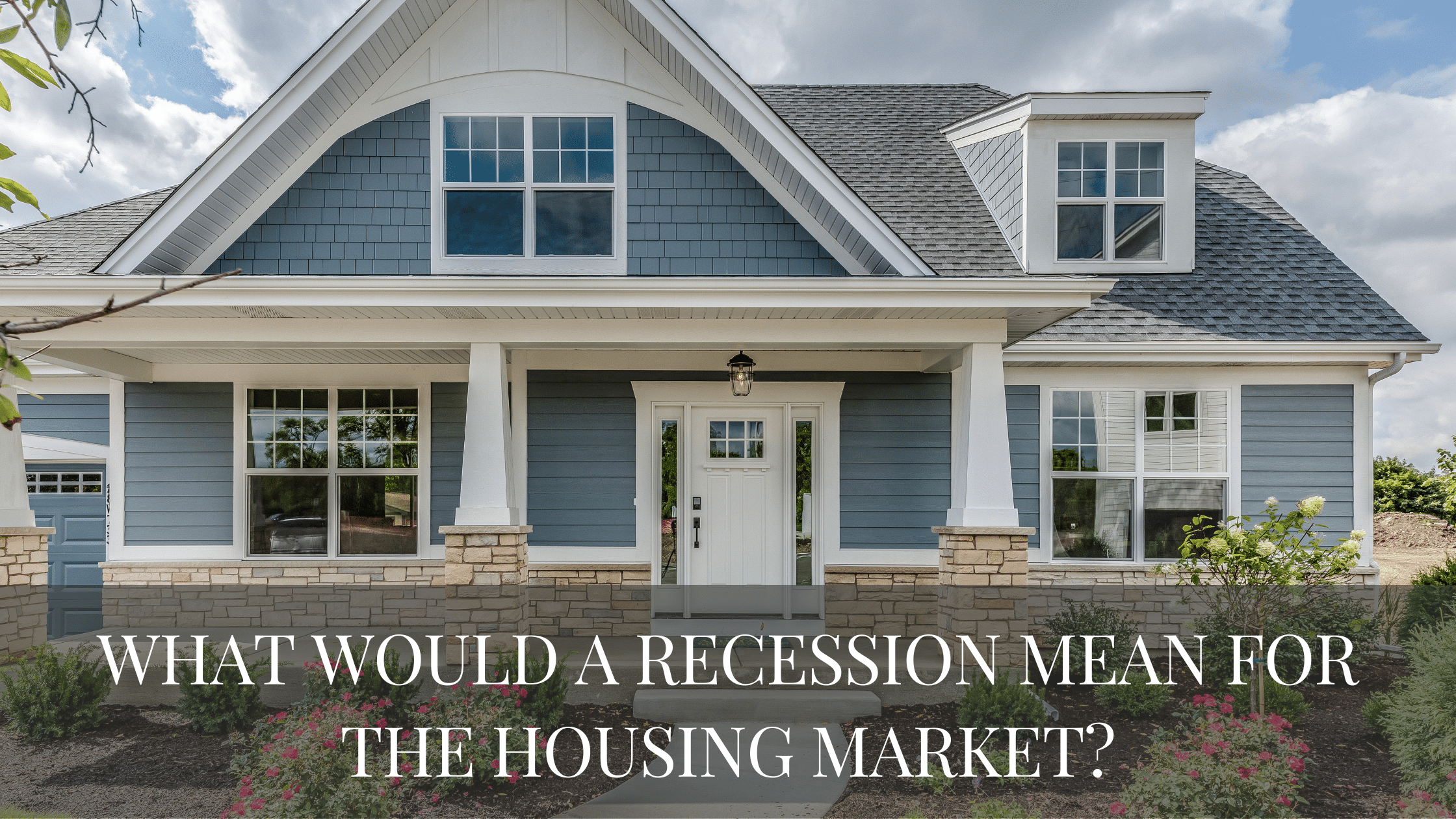4 Affordable Christmas Gifts Your Friends and Family Will Love

Trying to figure out what to get your friends and family for Christmas? Look no further!
Whether you’re shopping for your significant other, your best friend, or your parents, I’ve got you covered with 4 great gift ideas that won’t break the bank.
Bean Envy Cold Brew Coffee Maker

Some coffee drinkers are obsessed with finding the perfect cup of joe, and if you happen to know one of them, then the Bean Envy Cold Brew Coffee Maker is the perfect gift for them.
The Bean Envy Cold Brew Coffee Maker is easy to use and makes four cups of cold brew coffee in just minutes.
It’s made of high-quality materials and has a tight seal that keeps coffee fresh. Plus, it’s easy to store and serve from.
Anyone who loves coffee will love this brewer!
Night Light Bluetooth Speaker

Looking for a unique gift that will fit anyone on your list? Look no further than the Night Light Bluetooth Speaker!
This all-in-one speaker can be used as a wireless Bluetooth speaker, touch-control LED mood lamp, SD card music player, hands-free speakerphone, table lamp, and night light for children. It also has 360° Immersive Sound that will make you feel the music like never before. Plus, the built-in mic supports excellent hands-free capability with noise-canceling software.
The Night Light Bluetooth Speaker would make an excellent Christmas gift for anyone on your list!
Toscana Charcuterie Board

If you’re looking for a gift that is both unique and useful, look no further than the Toscana Charcuterie Board.
The board is made of hardwood and has a split-level design that allows for easy cutting of cheese. The three included cheese tools are also made of stainless steel and perfect for slicing hard cheeses. The carved moat around the perimeter prevents brine or juice runoff, making the board easy to clean.
Esmula Bartender Kit with Stylish Bamboo Stand

The Esmula Bartender Kit with Stylish Bamboo Stand would make a great Christmas gift because it is a professional bar display tool that has everything needed to create mixed drinks.
The bamboo stand makes the bar table look neat and elegant, while the smooth mirror effect on the shaker set gives it a sophisticated look.
This is the perfect gift for someone who loves to mix drinks, and it would look great on any bar table!
Time to Shop!
Christmas shopping doesn’t have to be stressful or expensive. These four affordable gifts are sure to please everyone on your list. So take a deep breath, relax, and enjoy crossing people off your list, knowing that you’ve found the perfect present for them.
How to Choose the Right Roofing for Your Home

With the rise in roofing styles and materials available in the market, it is tough to make the right choice. The cost and durability of the roof play a considerable part in your decision. To help you save your time and money, we’ve curated a list of roofing materials along with their pros and cons.
So, let’s choose the right roofing for your home!
Key Factors to Consider When Replacing a Roof
There are a few factors that need to be taken into account when choosing a roof:
- The durability factor
- How well does it perform during natural disasters such as hurricanes and fires?
- The weight – it should not be heavier than the existing roof framing; otherwise, it might fall
- How much slope does the roof have?
- How well it goes with the overall aesthetic of the house?
- How sustainable is it? Are the materials used recyclable and eco-friendly?
- Does the roofing comply with the local building codes?
- How much does it cost?
Types of Roofing Materials
The type of roofing materials varies from one homeowner to another. While one might need a roof with utmost strength, the other might have its focus on the slope. Different areas have different roofing requirements. However, these six roofing materials fall into the category of the most popular ones.
1. Asphalt Shingles
There are two types of asphalt shingles – laminate and single-thickness. These are made by mixing fiberglass with asphalt and finishing it with a textured surface. These are a common preference among homeowners because they are easy to install and budget-friendly.
Pros: These are available in a wide range of colors and are known to be the most affordable roofing material for homeowners.
Cons: The material doesn’t provide a significant level of insulation and is known to have a shorter lifespan than other roofing materials.
2. Wood Roofing
Wood has long been used as one of the most preferred residential roofing materials. However, it has high flammability that poses a significant threat. So, for areas that experience severe hot temperatures and there are higher chances of wildfires, homeowners don’t consider this a safe option.
Pros: It is an excellent roofing material for pleasant areas where the temperature doesn’t go extreme. Wood offers a rustic, natural look, making your house’s overall aesthetic look great. If you wish to get a great variety and are all about sustainability, a wooden roof is what you need.
Cons: The flammability rate is high, and there are higher chances of it catching mold. Additionally, the lifespan of wood is not limited.
3. Metal Roofing
Metal, such as aluminum, copper, steel, etc., is the most demanded roofing materials that are highly long-lasting and can withstand extreme weather. It has over fifty years of life expectancy. It poses a solid resistance to mildew, mold, and other water-related damages. However, they come at a cost. It takes time to install them as well.
Pros: Metal is a solid material that offers high solar reflectance, enabling efficient cooling and heating of homes.
Cons: It is the most high-priced roofing alternative compared to others.
4. Ceramic / Cemented Tiles
Ceramic or cemented tiles are luxurious; however, they are the heaviest roofing alternatives. In addition, they are expensive.
Pros: The tiles are excellent and energy efficient.
Cons: The weight of the tiles will require homeowners to provide extra frames for support.
5. Slate Roofing
One of the most used natural roofing options is long-lasting slate roofs. With proper care, they can last up to decades! A slate roof is a raw heat-proofing material that keeps your house warm and cozy. This roofing material is resistant to water damage and extreme temperature changes.
Pros: It is a sustainable and recyclable roofing material.
Cons: It is also pricier, and you will need additional frame support to ensure it sits well.
6. Synthetic Roofing
Plastic, rubber, and polymer are known as synthetic roofing. It is made to offer a great look, color, and texture at a lower cost.
Pros: These are made keeping durability and affordability in mind.
Cons: Recent developments claim synthetic roofing tends to absorb a specific moisture level.
When you’re considering a replacement for your roof, be sure to contact a roofing expert.
Holiday Essentials You Need In Your Life This Season

The holiday season is the perfect time to gather all your loved ones for a huge party/dinner or celebration. Regardless of the occasion, menu, or guest list, a few essentials for the holiday season remain constant.
From scented candles to fresh tablecloths and wine glasses, we have curated a list of essentials that’ll fit right into your budget and go with the aesthetic of the holiday season. These will help you plan a stress-free, sparkling season of entering.
Let’s get right on the list!
Scented Candles
Scented candles are a holiday season favorite! They’re among the few things that never go out of style. A good candle has the power to set a cozy and welcoming tone at a holiday gathering. These are available in various scents, shapes, sizes, and colors. Choose the one you love.
Wine Glasses
Wine glasses add so much more to any occasion. You can’t go wrong with a vibrant colored wine glass set on the dinner table, and it’s the perfect way to style your table. You can choose to mix and match, and we’re sure your guests will love cheers. Whatever you’re toasting, it will only be grander with a set of stunning wine glasses.
Tablecloth
A well-textured tablecloth is a great way to enhance the look of the dining table. There is a vast selection of textured tablecloths – choose a color that screams the holiday season. The variety of shapes, styles, and colors adds an extra layer of panache to the table. A minimally textured tablecloth is a great addition, making cleaning and washing easier.
Table Serving Set
The most important thing on the table will not be the menu but the serving set. It will make the table look even more beautiful if they stand out. You can serve your guests with ease. Choose a set that can be used to serve all the essentials, from starters to desserts.
Home Décor Paintings
Beautiful and artistic wall paintings that match the aesthetics of your home will add to the overall look of your dinner/ party area. Go for warm and inviting illustrations that will be great for the holiday season. Switch it up and embrace the holiday spirit! It will surely get you a lot of praise.
Dinner Plate Sets
Pulling out some festive dinnerware for your table is an excellent way to add holiday cheer. Be picky and go for statement pieces that don’t look cheesy or scream overboard. Pottery plates and bowls are great examples of dinner plate sets.
Plaid Napkins
Festive napkins are a great way to elevate your table. A set of traditional plaid-designed napkins will do the trick. Ensure these are made of cotton, so it’s easier to wash them.
Wood Cheese Board
A large wooden board is perfect for displaying your starters and appetizers. You can easily align your meat, cheese, veggies, etc., on it. The guests will be happy to pick on these while you prep for the main course.
Cake Stand
What’s for dessert? Nothing catches the eye more than the dessert bar at a party. The best way to decorate your dessert bar is to have a cake stand. It will be a beautiful focal point of the evening, and the guests will surely enjoy it.
Cleaning Kit
If you love to throw parties and get-togethers during the holiday season, you will need a cleaning kit that you can count on. It will have all the necessary products to make cleaning easier for you. You’ll be able to clean tables, countertops, stoves, sinks, and all types of surfaces in half the time.
Food Storage Containers
When there’s a huge party, there are bound to be leftovers. And for that, you need all sizes of food storage containers. It is best to stock up on storage containers of all sizes. You can save more time by freezing portions of gravy to prep full-sized meals. You can quickly warm them up later and make work easier for yourself.
Cooking Utensils
The proper cooking utensils will help you prep your meals quickly and reduce the time it took earlier. When preparing meals for over thirty people, you need reliable cooking utensils to make the process easier.
Pie Knife And Server
This is the season to enjoy your favorite warm pies! Be prepared with a gorgeous knife and serving set to add to the festive season decorations.
Whether or not this is the first time you’re hosting a holiday party, these entertaining essentials will make you look like a seasoned pro.
What Would a Recession Mean for the Housing Market?

The percentage of economists who believe that a recession will occur in the next 12 months is growing, according to a recent survey from the Wall Street Journal.
In July 2021, only 12% of economists surveyed thought that there would be a recession by this time in 2022When polled again this past July, 49% of respondents believe that a recession will occur in the next 12 months.
The reasons for this change in opinion are varied, but most experts agree that the current economic conditions are ripe for a downturn.
Though recessions can be scary, especially when considering a large purchase like a home, it’s important to remember that real estate is historically a fairly recession-proof investment. So while stock prices and other investments may see more volatility during an economic downturn, real estate tends to be much more stable.
For those who are looking to buy a home in the near future, a recession may actually present an opportunity. A slowdown in the housing market can mean there are fewer buyers competing for properties, which could lead to lower prices.
So while a recession may be cause for some anxiety, it doesn’t necessarily mean that homeownership is out of reach.
A Recession Doesn’t Mean a Decrease Home Prices
Home prices have appreciated in four of the last six recessions. So, historically, when the economy slows down, it doesn’t mean home values will fall. There are a number of factors that contribute to this.
First, recessions tend to be relatively short-lived. Home prices may dip in the early stages of a recession, but they generally rebound as the economy begins to improve.
Second, many people view a home as a long-term investment. Even if they experience financial difficulties in the short term, they are typically unwilling to sell their home at a loss.
Finally, there is always a demand for housing, regardless of economic conditions. People will always need somewhere to live, and this creates a built-in floor for home prices.
Consequently, while recessions can be difficult for homeowners, they generally don’t have a significant impact on home values.
A Recession Means Decreased Mortgage Rates
Research also helps paint the picture of how a recession could impact the cost of financing a home. Historically, each time the economy slowed down, mortgage rates decreased.
This is because during a recession, people are generally less confident about their future income and employment prospects, and banks become more conservative in their lending. As a result, demand for loans decreases, and mortgage rates fall.
Of course, the reverse is also true – during periods of economic growth, mortgage rates tend to rise as demand for loans increases. However, it’s important to remember that these are general trends – there is no guarantee that mortgage rates will always follow the ups and downs of the economy.
By understanding how the economy can influence loan demand and interest rates, you can make more informed decisions about when to buy a home.
Making the Right Decision
Although a recession may mean difficult times ahead for some businesses, it could present opportunities in the housing market.
If you’re thinking of buying or selling this year, contact me to discuss what these changes could mean for you.
What to do if Your Home Isn’t Selling

You’ve put your home on the market, but it’s not selling. What could be wrong?
It can feel like a personal attack when your home doesn’t sell. You may start to wonder what you’re doing wrong or if there’s something wrong with your house.
Before you start pointing fingers and tearing down walls, take a step back and consider these 5 things that might be preventing your home from selling.
Reduce the Price
If your home has been on the market for an extended period of time, it’s likely that you’ll need to reduce the price in order to find a buyer. This is especially true if there are similar homes in your area that are selling for less than your asking price.
It can be hard to accept that you may need to sell for less than you originally wanted, but it’s important to remember that your home is only worth what someone is willing to pay for it.
If you’re considering reducing the price of your home, talk to your real estate agent to see if it’s the right move. They will be able to advise you on what price point is realistic for your area and market.
Make Updates and Repairs
If your home is in need of some updates or repairs, it could be deterring potential buyers. Making even small changes, like painting the walls or fixing a loose doorknob, can make a big difference in how your home is perceived by buyers.
Of course, you don’t want to go overboard with renovations. You likely won’t see a return on investments like a kitchen or bathroom remodel, so it’s important to focus on making changes that will be appealing to a wide range of buyers without breaking the bank.
Restage the Home
When selling your home, it’s important to make it look as appealing as possible to buyers. This means making sure the furniture is arranged in a way that is attractive, the walls are painted in a neutral color, and the decor is updated and stylish.
If your home is currently cluttered or outdated, consider hiring a professional stager to help you update it. Your real estate agent can recommend a good stager to you.
New Listing Photos
When you’re selling your home, first impressions are everything. And these days, potential buyers are often forming those first impressions online.
If your home isn’t selling, it could be because the listing photos don’t do it justice. Hiring a professional photographer to take new photos can make a world of difference. They’ll know how to show off your home’s best features and capture them in the best light. As a result, you’re likely to see more interest from buyers – and maybe even a higher asking price.
So if you’re wondering why your home isn’t selling, take a look at the listing photos. If they’re not up to snuff, it may be time for a fresh set.
Stop Being a Helicopter Seller
When you put your home on the market, it’s only natural to want to be involved in the sale. After all, it’s a big investment, and you want to make sure everything goes smoothly. However, there’s a fine line between being involved and being overbearing, and many sellers end up crossing it.
If your home isn’t selling, it could be because you’re being a helicopter seller. Helicopter sellers are those who hover around during showings and open houses, offering unsolicited advice and trying to answer every question that comes up.
While you may think you’re being helpful, in reality, you’re just making potential buyers feel uncomfortable. It’s important to remember that buyers are looking for a new home, not a new best friend.
If you give them the space they need to explore your house on their own, they’ll be more likely to imagine themselves living there. So step back and let them do their job. Your home will sell sooner than you think.
Hidden Moving Expenses You Need to Know About

Moving is expensive! You have to pay for the moving truck, gas, and packing supplies, and then there are all the hidden costs that you don’t think about until it’s too late.
It’s hard enough to move without having to worry about extra expenses, but they can really add up if you’re not careful.
We’ve put together a list of the five most common hidden moving costs so that you can be prepared. By knowing what to expect, you can avoid any surprises and keep your budget on track.
Professional House Cleaning
While most people focus on the cost of hiring a moving company, they often forget that they will also need to clean their old home before they move out. This is especially true if you are moving out of a rental property. In addition, many people hire professional cleaners to clean their new home before they move in.
Whether you’re hiring a cleaner to clean your old home or your new one, it’s important to factor this cost into your budget. Professional house cleaners can be a significant expense, but they are worth it if you want to make sure your home is clean and welcoming when you move in.
Moving Insurance
While your homeowners’ or renters’ insurance might cover some damages that occur during a move, it’s important to remember that these policies typically have limits on what they will pay for.
Moving insurance can help to fill in the gaps and protect your belongings in the event of loss or damage. Whether you are hiring a moving company or doing it yourself, be sure to ask about insurance options and compare rates before making a final decision. A little research now could save you a lot of heartache later.
Pet and Child Care
As any parent knows, children can be a handful – especially when there’s a lot of commotion going on. That’s why, when you’re moving to a new home, it’s important to make arrangements for childcare in advance. The last thing you want is for your kids to be running around underfoot while the movers are trying to do their job.
Likewise, if you have pets, it’s best to find somewhere for them to stay during the move.
Not only will this help to keep them out of harm’s way, but it will also prevent them from getting lost in the shuffle. So, before you start packing up your belongings, be sure to make arrangements for your children and pets. It’ll make the whole process a lot smoother – and a lot less stressful.
Restocking Your Pantry
When you’re moving, it’s easy to forget some of the smaller details – like budgeting for food.
If you’re used to cooking most of your meals at home, you may not realize how expensive it can be to restock your pantry after a move.
Not only do you have to buy all new groceries, but you may also end up eating out more often than usual while you’re unpacking and getting settled into your new place.
For this reason, it’s important to be a little generous with your food budget when you’re planning a move. That way, you won’t be caught off guard by hidden expenses later.
Utility Deposits
A utility deposit is a hidden moving expense that’s often overlooked. This is money that you’ll need to pay upfront in order to have your utilities turned on at your new home.
The amount of the deposit can vary greatly, depending on the utility company and the type of service being provided. As a result, it’s important to be aware of this hidden expense when budgeting for your move.
Because utility deposits can end up costing hundreds of dollars, it’s important to factor them into your overall moving budget.
Don’t Get Caught Off Guard
Now that you’re aware of some of the hidden moving expenses, it’s time to get started on finding your new dream home. Contact me today, and let’s get started! I would be happy to help you every step of the way.
Have you started packing yet?
Don’t Let Tree Roots Destroy Your Home

Trees are no doubt one of Mother Nature’s most impressive feats. They provide shade on hot days, act as a windbreak during storms, and help to improve air quality. In addition, trees can also increase the curb appeal of a property and add to its resale value.
However, tree roots can cause a lot of damage to your home, and it’s not always easy to tell when they’re becoming a problem.
If you’re like most people, you probably don’t know much about tree roots and the damage they can do. You may not even be aware of how to prevent them from damaging your home in the first place.
With proper care and attention, you can enjoy all the benefits that trees have to offer without risking any damage to your home.
Keep Your Foundation in Shape
Any homeowner knows that cracks in the foundation or walls are not only unsightly but can also lead to structural damage. One type of damage that can be caused by cracks is root-related damage.
As roots grow, they invade the cracks in concrete and expand, causing the cracks to widen. This can lead to serious problems, such as foundation failure or wall collapse.
To prevent root-related damage, it is important to keep your foundation and other structures in good repair. Regularly check for cracks and have them repaired promptly.
You should also consider having a professional inspect your foundation every few years to ensure that it is in good condition. By taking these simple steps, you can help protect your home from the costly and destructive effects of root-related damage.
Plant the Right Trees in the Right Spots Around Your Home
When choosing trees to plant around your home, it is important to consider the size and type of tree.
Although large trees can provide many benefits, they also have a larger root system that can cause problems.
It’s also important to consider the location. Avoid planting trees too close to sewer lines, septic tanks, or other underground utilities.
You also need to make sure that trees are not planted too close to the house so that their roots have room to grow without causing any damage.
Use Preventative Landscaping
It’s no secret that tree roots can cause serious damage to homes and other structures. In order to prevent this damage, it’s important to engage in preventative landscaping.
One way to do this is by watering your trees deeply and regularly. This will encourage the roots to grow deeper into the soil, making them less likely to cause damage to nearby structures.
Even trees that normally have more shallow roots will start to grow deeper roots if they are watered regularly.
Another way to prevent damage is by using root control barrier products.
A root barrier is a wall placed underground that blocks plant roots. This is often used to protect structures or other plants but can also be used to preserve soil moisture. Root barriers are made of various materials, including plastic, metal, and concrete. They are placed around the perimeter of an area to be protected, and the roots of plants are then diverted away from the barrier.
Root barriers can be an effective way to prevent damage from plant roots, but they must be carefully installed and monitored to ensure that they are functioning properly. Otherwise, they can actually cause more damage than they prevent.
Love Your Trees
Proper tree planting and maintenance can help you avoid costly foundation repairs down the road. By following the tips we’ve outlined in this post, you can keep your home’s foundation healthy and intact for years to come.


 Facebook
Facebook
 Twitter
Twitter
 Pinterest
Pinterest
 Copy Link
Copy Link




